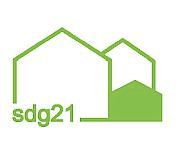Foresters, forest owners and nature lovers are very concerned about what has been happening in our forests since the beginning of 2018: Initially snow breakage and winter storms and the subsequent drought and bark beetle infestation have led to dramatic tree dieback. And there is no end in sight! The forest has been under extreme climate stress for almost two years and foresters are in permanent disaster mode. Well over 100 million old trees have already died. In addition, several million young plants have dried up. These have been planted in recent years to make the forest even more diverse and stable. But natural regeneration is also affected. The Association of German Foresters is calling for all efforts at federal and state level to be stepped up and pooled immediately. The BDF proposes the "Carlowitz Plan" as a strategic package of measures. Its measures are intended to preserve the forest in all its functions and as an important system-relevant basis of life and heritage for us humans!
In addition to the spruce tree species, which has so far mainly suffered from the drought, the beech, the most important deciduous tree species and "mother of the forest" in our forests, is now apparently also showing clear and region-wide signs of dying out. "This is particularly dramatic! In recent decades, we foresters have mainly relied on copper beech, our natural main tree species, for the necessary forest reorganisation towards climate-stable forests," says BDF Federal Chairman Ulrich Dohle. In addition, two important tree species have already been virtually lost in many forests due to fungal diseases of elm and ash. A similar trend is emerging for the maple tree species. With corresponding negative consequences for biodiversity and forestry options for the future.
"While we foresters have been busy for almost two years repairing the damage that has occurred so far - and there is no end in sight - the important future task of developing the forests in a climate-stable way is often falling by the wayside. There are simply too few of us to keep on top of the situation," says Dohle, drawing attention to the massive reduction in forestry staff over the past twenty years, during which around 50% of forestry employees have been cut.
A few days ago, Federal Forest Minister Julia Klöckner took up the results of the ETH Zurich study and announced a massive reforestation programme. The BDF is calling for this announcement to be translated into concrete government action in the near future. To this end, the necessary financial and human resources must be made available.
"The common good and services of general interest, especially in public forests, must once again take centre stage," says Dohle, specifying the demands. "The strong commercial orientation of the past two decades was a political mistake that must now be corrected as quickly as possible!" Bavaria has already initiated this paradigm shift for its state forest. Other federal states must now follow suit!
Forests are not only victims of climate change, they are also urgently needed to mitigate climate change. As a living reservoir of solar energy, it is a significant CO2 sink.
The handling of the forest dieback in the 1980s showed that responsible and targeted environmental policy can help to avert predicted damage. Although the causes and effects in the current climate debate are much more complex, we can certainly learn from the past.
The Association of German Foresters is therefore calling for the convening of a National Forest Summit at this time of climate emergency for the forest! The BDF is currently developing the "Carlowitz Plan" as the basis for a social discourse on the forest by politicians, experts and groups interested in the forest. The plan bears the name of Hans Carl von Carlowitz (1713), who first coined the term sustainability in forestry. Since then, sustainability has been the defining characteristic of all forestry activities!
Ulrich Dohle summarises it as follows: "These are no longer individual unusual weather events. This is climate change. I have therefore declared a climate emergency for forests today. Every effort must be made to preserve our forests as the formative green third of our country and a systemically relevant basis of life! This is the only way we can fulfil the principle of sustainability!"
Source: Press release from the BDF - Association of German Foresters dated 15 July 2019
Keywords:
Stakeholders, DE-News, Wood construction, NaWaRohs, Environmental policy, Ecology



